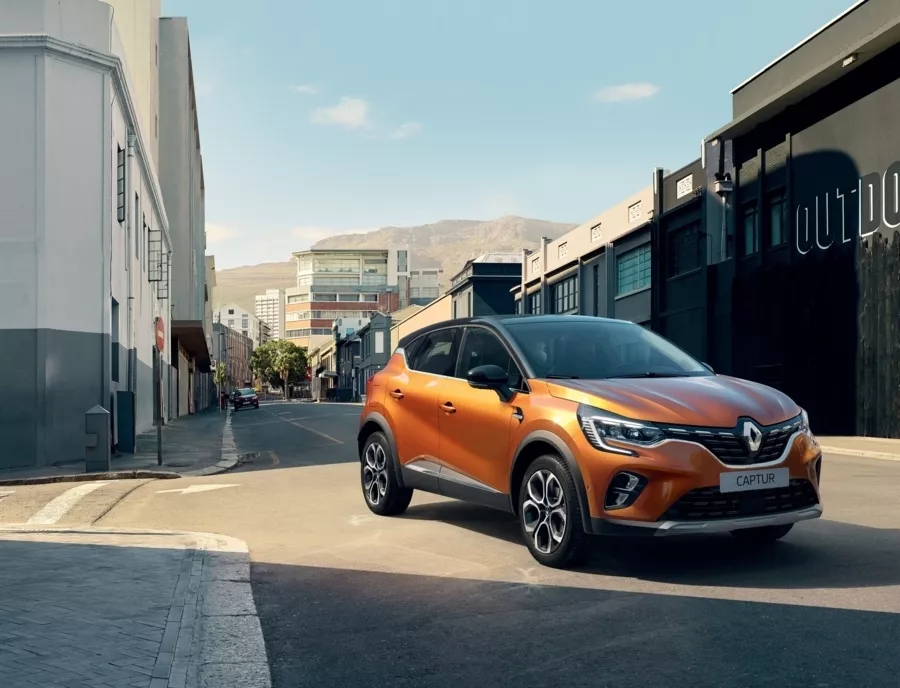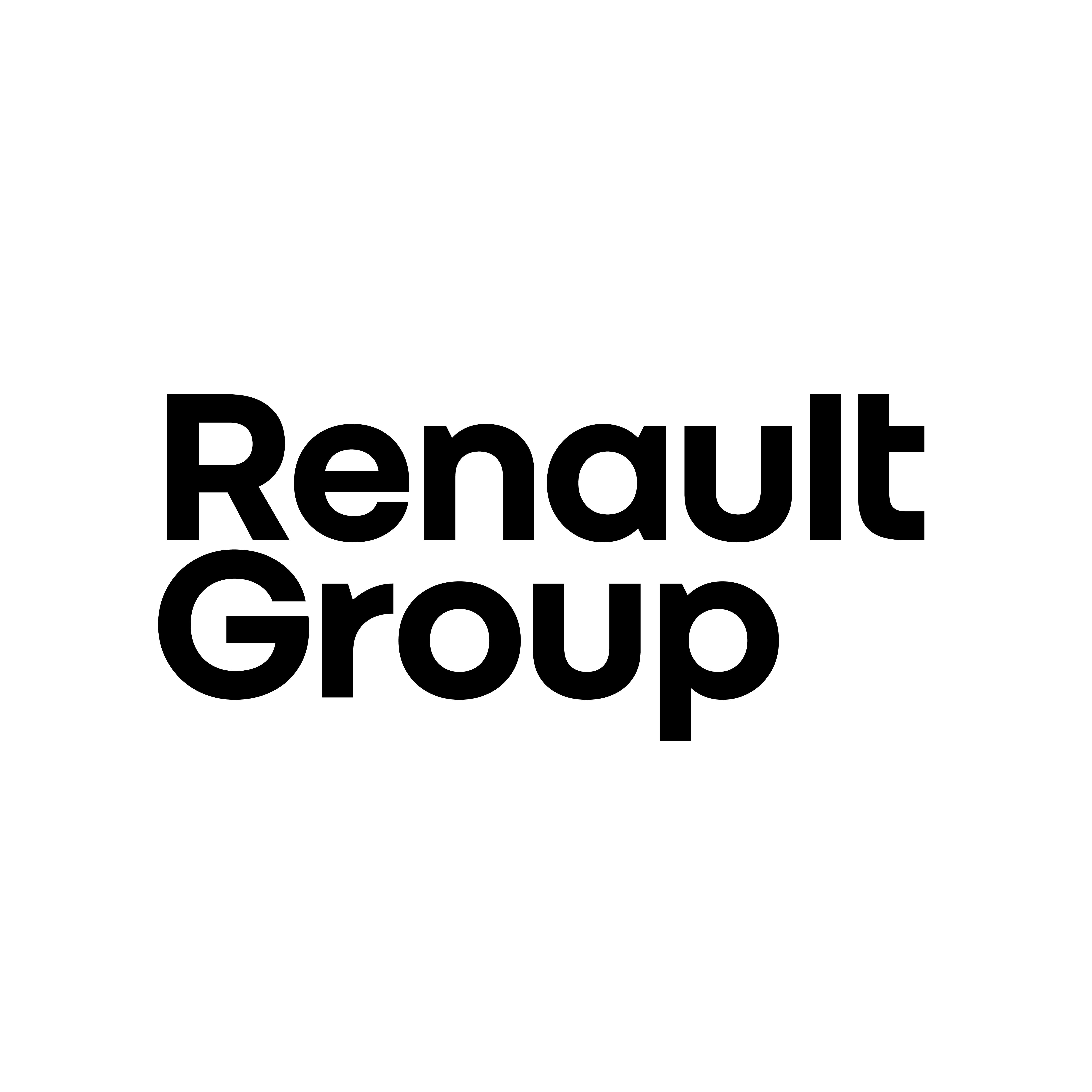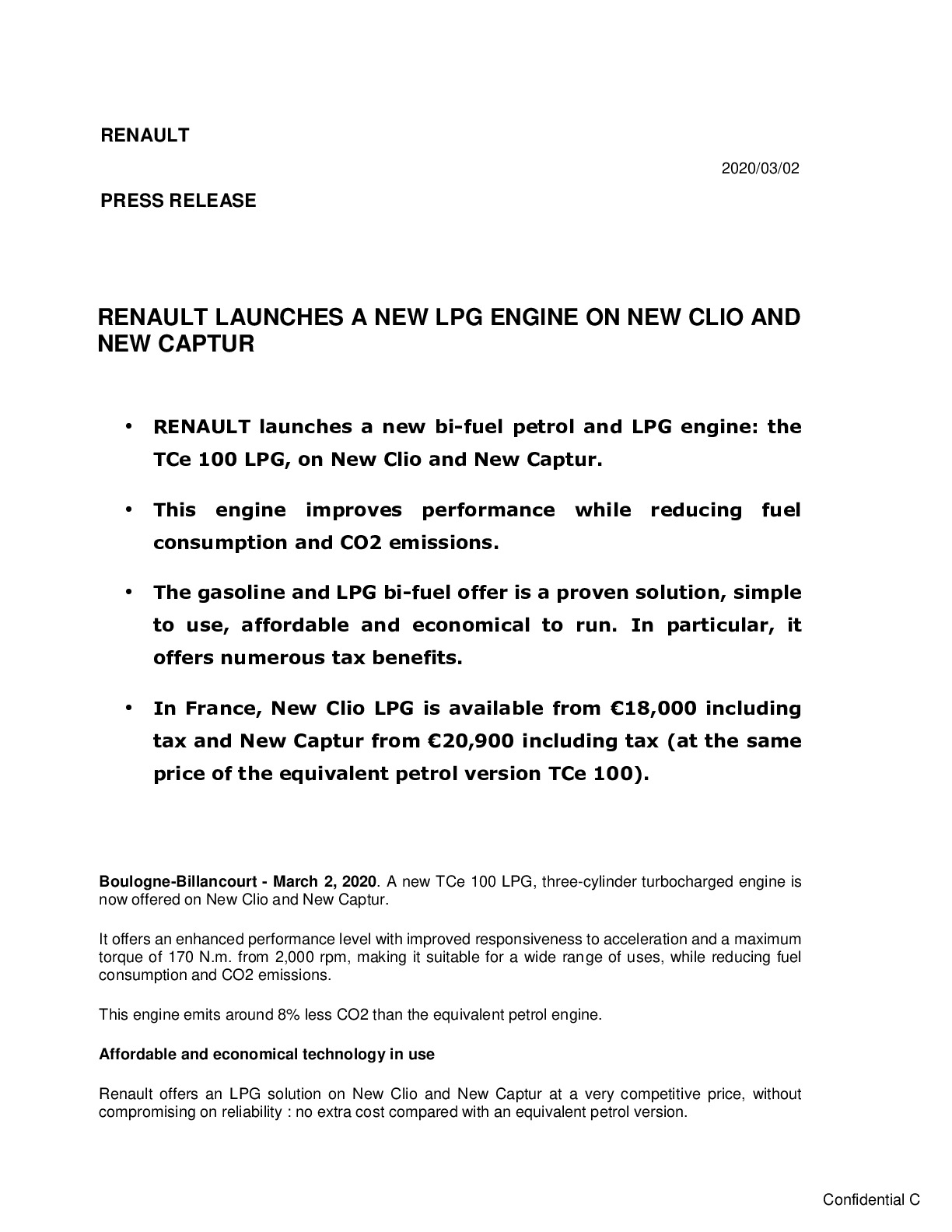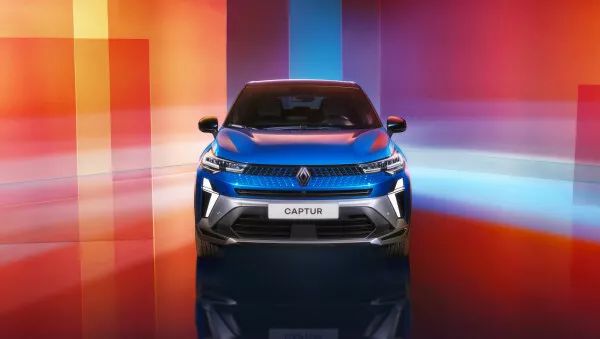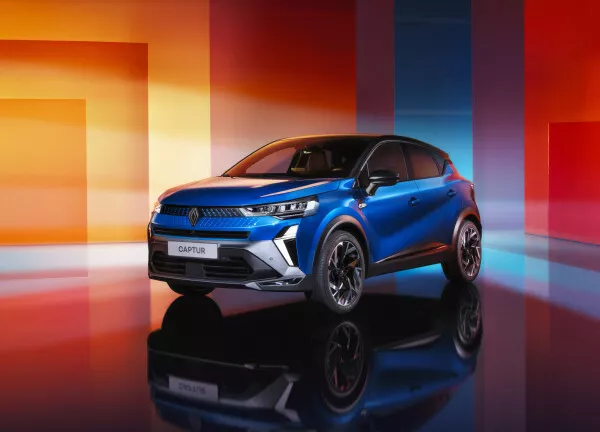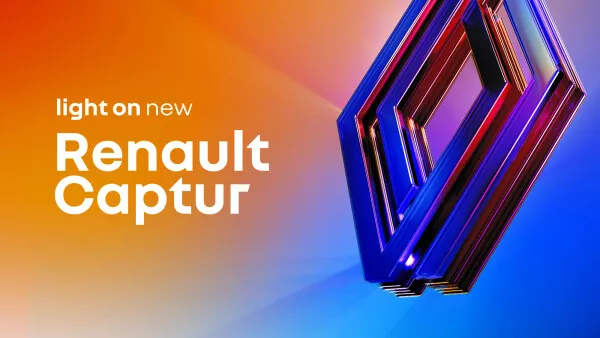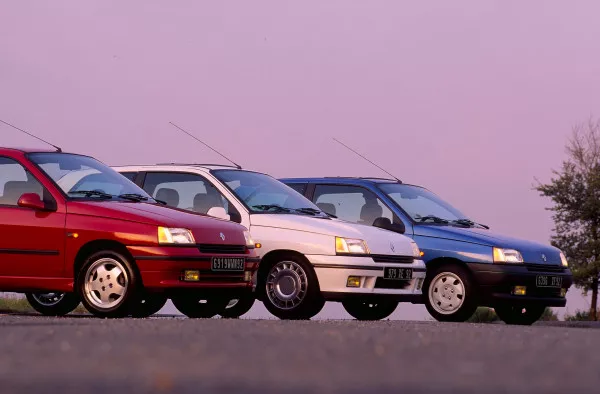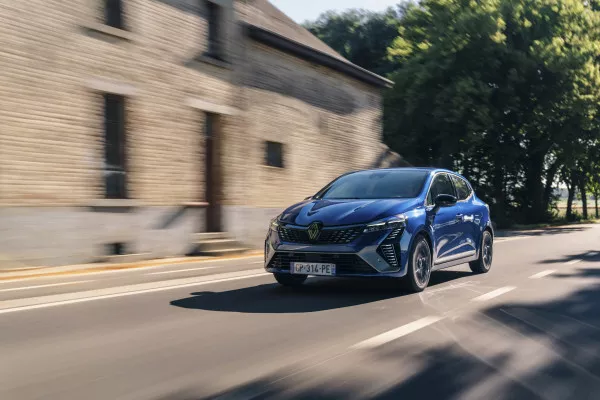RENAULT LAUNCHES A NEW LPG ENGINE ON NEW CLIO AND NEW CAPTUR
- RENAULT launches a new bi-fuel petrol and LPG engine: the TCe 100 LPG, on New Clio and New Captur.
- This engine improves performance while reducing fuel consumption and CO2 emissions.
- The gasoline and LPG bi-fuel offer is a proven solution, simple to use, affordable and economical to run. In particular, it offers numerous tax benefits.
- In France, New Clio LPG is available from €18,000 including tax and New Captur LPG from €20,900 including tax (at the same price of the equivalent petrol version TCe 100).
02 March 2020
Boulogne-Billancourt - March 2, 2020. A new TCe 100 LPG, three-cylinder turbocharged engine is now offered on New Clio and New Captur.
It offers an enhanced performance level with improved responsiveness to acceleration and a maximum torque of 170 N.m. from 2,000 rpm, making it suitable for a wide range of uses, while reducing fuel consumption and CO2 emissions.
This engine emits around 8% less CO2 than the equivalent petrol engine.
Affordable and economical technology in use
Renault offers an LPG solution on New Clio and New Captur at a very competitive price, without compromising on reliability : no extra cost compared with an equivalent petrol version.
The price of LPG fuel is significantly more economical (up to more than half the price of a litre of petrol or diesel).
In addition, this technology offers significant tax advantages:
- Total or partial exemption from car registration (depending on the department).
- Eligibility for conversion premium
- Crit'Air 1 sticker for all LPG vehicles
- Free or preferential parking for Green Disk users
- Specifically for professionals: exemption from the TVS for 3 years and VAT recovery on Clio LPGs.
If the average consumption of an LPG engine is slightly higher, the overall fuel cost per kilometre is reduced by up to 30 % compared to a petrol engine and up to 8 % compared to a diesel engine.
Unrestricted mobility
The vehicle can run on either petrol or LPG. It is equipped with two separate tanks, one for petrol and one for LPG. With both tanks full, the vehicle has a cumulative range of more than 1,000 km.
This operation ensures an unlimited radius of circulation: petrol can be found in all stations and LPG is present in 1 station out of 4 on average in Europe and in 1 station out of 6 on average in France.
In addition, LPG vehicles can access underground car parks thanks to the safety features built into the system (safety valve, non-return valve and 80% refill limit) and are not affected by traffic restrictions in the event of pollution peaks as they are covered by the Crit'Air 1 sticker.
Proven and safe technology, mastered for many years
LPG integration on vehicles is an operation carried out directly in the assembly plant. For the customer, this means: a simple order, without any additional delay and a single contact person for the warranty and maintenance of his vehicle in the Renault network, trained in this technology. Right from the design stage, the petrol engine is designed to run on LPG fuel. The additional LPG tank, made of high-strength steel, is located at the level of the spare wheel, without touching the petrol tank. A non-return valve, an 80% fill limiter, a flow limiter, a solenoid valve and a safety valve complete the technical system.
Nearly 15 million vehicles run on LPG in the European Union, 26 million worldwide.
Renault has been offering an LPG offer since 2010. Confident in this technology, Renault guarantees it for 2 years unlimited mileage, like all the other vehicles in the range (excluding Espace, Talisman and Koleos).
A simple technology
Operation is simple for the driver. Switching from petrol to LPG, and vice versa, is done in two ways: manually, by operating the dedicated switch located in the passenger compartment at any time (the chosen mode is then repeated on the following restarts) or automatically, when the LPG tank is empty. A dedicated gauge controls the level of the LPG tank.
Filling the LPG tank (32l on New Clio and 32l on New Captur) is also quick and easy (just 2 minutes).
Another strong point of this original integration is that the boot volume above the floor remains the same (the LPG tank is installed in place of the spare wheel).
Price France
Orders have been open from 2 February 2020 for New Clio and from 2 March 2020 for New Captur.
|
Price France in € TTC |
New Clio LPG |
New Captur LPG |
|
ZEN |
18 000 € |
20 900 € |
|
BUSINESS |
18 400 € |
21 500 € |
|
INTENS |
20 400 € |
23 400 € |
|
Consumption and emissions WLTP |
New Clio LPG |
New Captur LPG |
|
CO2 (g/km) |
122 / 110 |
136 / 122 |
|
Combined Cycle (l/100km, petrol/ LPG) |
5,4 / 7,7 |
6 / 7,5 |
|
Malus |
0 € |
0 € |
Raphaèle Jarry, Product Marketing Director for Renault France:
"Faced with the challenge of the energy transition, Renault offers a simple and economical LPG offering that improves consumption and CO2 emissions. This solution is complementary to its wide range of electric, hybrid and plug-in hybrid vehicles. This approach contributes to the Renault Group's commitment to reduce its global carbon footprint by 25% in 2022 compared to 2010.
Focus on LPG (Liquefied Petroleum Gas)
LPG: What is it?
LPG is a mixture of propane and butane (which has a standard in Europe: EN589). Its combustion gives off less carbon monoxide, hydrocarbon and nitrogen oxide emissions than a petrol engine. Moreover, LPG has a major advantage: approximately 10% less CO2 emissions than an equivalent petrol engine.
LPG: how does it work?
In Europe and most of the world, the LPG injection system is an additional system to the existing petrol engine. Its use requires a specific tank, capable of withstanding the pressure imposed by its storage in liquid form, and a slight modification to the engine's fuel system.
Groupe Renault has manufactured cars since 1898. Today it is an international multi-brand group, selling close to 3.8 million vehicles in 134 countries in 2019, with 40 manufacturing sites, 12,800 points of sales and after-sales and employing more than 180,000 people.
To address the major technological challenges of the future, while continuing to pursue its profitable growth strategy, Groupe Renault is focusing on international expansion. To this end, it is drawing on the synergies of its five brands (Renault, Dacia, Renault Samsung Motors, Alpine and LADA), electric vehicles, and its unique alliance with Nissan and Mitsubishi Motors. With a 100% Renault owned team committed to the Formula 1 World Championship since 2016, the brand is involved in motorsports, a real vector for innovation and awareness.
Groupe Renault has manufactured cars since 1898. Today it is an international multi-brand group, selling close to 3.8 million vehicles in 134 countries in 2019, with 40 manufacturing sites, 12,800 points of sales and after-sales and employing more than 180,000 people.
To address the major technological challenges of the future, while continuing to pursue its profitable growth strategy, Groupe Renault is focusing on international expansion. To this end, it is drawing on the synergies of its five brands (Renault, Dacia, Renault Samsung Motors, Alpine and LADA), electric vehicles, and its unique alliance with Nissan and Mitsubishi Motors. With a 100% Renault owned team committed to the Formula 1 World Championship since 2016, the brand is involved in motorsports, a real vector for innovation and awareness.
sur le même sujet
